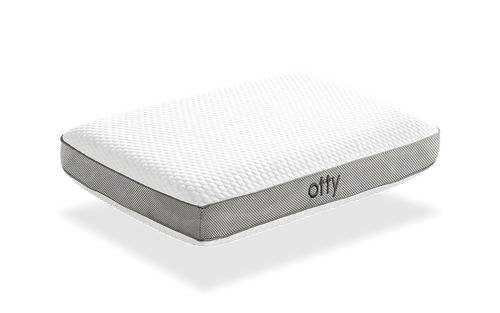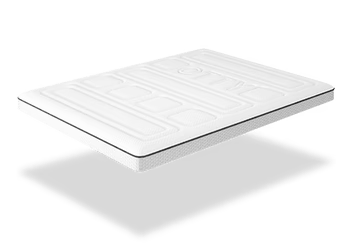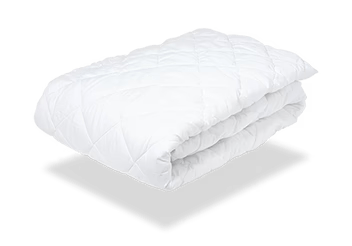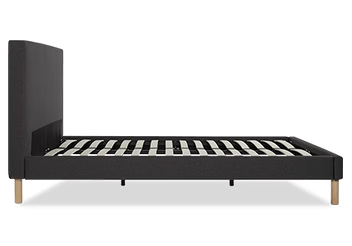Choosing the right mattress for a couple which suits both partners is not easy, but incredibly important.
We understand that a good night's sleep is the cornerstone of a healthy relationship, and the right mattress plays a pivotal role in achieving this if you sleep with a partner.
In this guide, we'll explain what to look for to choose the best mattress for couples, considering factors such as body type, memory foam, pressure relief, and motion isolation.
Table of contents
Why Couples Need To Consider Their Mattress Choice Carefully
Choosing the right mattress for couples is all about balance and compromise. At the end of the day (literally), it's something that ultimately will affect both partners and their happiness.
The challenge lies in finding a mattress that can cater to the unique needs of both individuals.For instance, one partner might prefer a firm mattress while the other might find comfort in a softer one.
Similarly, one might be a hot sleeper while the other tends to feel cold at night. These differences in preferences can make the task of finding the right mattress quite daunting.
A couple's mattress also needs to be able to handle the combined weight and movements of two people. This means that factors such as motion isolation, edge support, and temperature regulation become even more crucial. A mattress that lacks in these areas can lead to disrupted sleep and discomfort for both partners.
Another factor that couples need to consider is the size of the mattress. A mattress that is too small can lead to cramped sleeping conditions, while one that is too large might not fit in the bedroom.
Therefore, couples need to find a mattress that provides ample space for both partners to sleep comfortably, without compromising on the size of the room.
Factors to Consider When Choosing a Mattress for Couples
Weight Distribution
Different body types distribute weight differently on a mattress. For instance, heavier individuals may sink deeper into a mattress, affecting its overall comfort and support.
Sleeping Position
The sleeping position also plays a significant role. Side sleepers often require a softer mattress to accommodate their curves, while back or stomach sleepers may need a firmer surface for better spinal alignment.

Health Conditions
Certain health conditions, like back pain or arthritis, can influence the type of mattress needed. Memory foam or latex mattresses can provide the necessary pressure relief for these conditions.
Body Temperature
Some people naturally run hotter than others. If one or both partners tend to overheat during the night, a mattress with cooling properties, such as those with gel-infused memory foam, or hybrid mattresses, can be beneficial.
Personal Preference
Ultimately, personal preference is key. Some people prefer a firmer mattress, while others enjoy the plush comfort of a softer one. It's essential to find a balance that suits both partners.

How Motion Isolation Can Help Couples
Motion isolation is a crucial factor to consider when choosing a mattress for couples. It's the feature that ensures that when one person moves or gets out of bed, the other person doesn't feel it. This is particularly important for light sleepers who can be easily disturbed by their partner's movements.
Memory foam mattresses are one the best mattress types for motion isolation. They absorb the impact of movement, ensuring that it doesn't transfer across the mattress. This means that even if your partner is a restless sleeper, you can still enjoy a peaceful night's sleep.
Hybrid mattresses, which combine springs with foam or latex, can also be effective. The key is to look for pocketed coils, which move independently of each other, rather than a traditional innerspring unit. This allows the mattress to absorb movement more effectively, preventing it from reverberating across the bed.
By choosing a mattress with good motion isolation, you can help to ensure that both you and your partner get the quality sleep you need.
How to Choose a Mattress with Multiple Firmness Options
Choosing a mattress with multiple firmness levels can be a game-changer for couples with different preferences.
It's not uncommon for one partner to prefer a soft, plush mattress - for example if they are a side sleeper - while the other leans towards a firm mattress firmness - if they sleep on their back.
The material of the mattress plays a significant role in determining its firmness level.
Hybrid mattresses, for instance, are constructed with steel coils and foam, offering a balance between support and comfort. These mattresses are particularly beneficial for heavier individuals, back and front sleepers and couples, as they provide the necessary support without compromising on comfort.
On the other hand, all-foam mattresses are known for their pressure-relieving properties, making them a great choice for those who prefer a softer feel, ideal for side sleepers.
It's also important to consider the weight of the individuals using the mattress. As a general rule, heavier individuals tend to prefer firmer mattresses as they offer more support, while lighter individuals may find softer mattresses more comfortable.
Therefore, if you and your partner have a significant weight difference, a mattress with multiple firmness levels could be the solution, like medium firm mattresses.
Lastly, remember that firmness is subjective and can vary from person to person. What feels firm to one person may feel medium to another. Therefore, it's crucial to communicate with your partner and understand their firmness preferences before making a decision.
Summary and Takeaways
It's essential to consider factors such as body type, sleeping position, and individual preferences for firmness and comfort.
A good mattress for a couple should provide adequate support, pressure relief, and motion isolation to ensure both partners enjoy a restful night's sleep.
The market offers a wide range of options, from memory foam mattresses to hybrid comfort ones, each with its unique benefits.











